Writing Teaching Resources
Teaching writing strategies and the writing process this school year? Explore a comprehensive collection of teacher resources for elementary and middle school ELA teachers — all created by teachers!
Stocked with graphic organizers, writing prompts, templates, worksheets and so much more, this collection of printable and digital activities is designed to help you as you help your students become more effective communicators and unleash their creativity and imagination.
Save time on lesson planning with resources that have been through a careful review process by an expert member of our teacher team to ensure they're ready for your classroom and your students!
Are you looking for tips and tricks to add to your teacher toolkit this school year? Read on for a primer from our teacher team, including engaging activities for teaching writing in elementary and middle school and a look at some of the different writing strategies your students will need to learn.
11 Writing Strategies Kids Should Know by the End of Middle School
We can't talk about teaching kids to write without talking about the different writing strategies that can help them do just that!
When it comes to teaching our students to become confident writers who articulate their ideas effectively, here are some of the strategies our teacher team prioritizes:
1. Brainstorming
Brainstorming is something we often do in the classroom, and it's a crucial part of learning to generate the ideas that will drive students' writing as they progress through their educational journey. Kids should know how to create a list of potential topics or points related to a particular writing assignment.
With younger students, this is often done as a whole group by writing ideas and points on chart paper. In upper grades, students transition over to using text-based materials to generate ideas and talking points.
2. Outlining
Before diving directly into any assignment, our students should be able to create a structured framework or outline. Teaching students how to create this outline will help them organize their thoughts and arguments for penning their essays, reports and research papers.

3. Using Graphic Organizers
Technically graphic organizers are classroom tools, so you may not think of their use as a writing strategy per se. However, learning to use these tools is another means of providing kids with the tools they need to organize their ideas and information before they sit down to write.
These organizers are particularly useful for expository writing — students can use them to outline main ideas, supporting details, and transitions.
Students can also take advantage of story maps when they are working on narrative writing to plot the key elements of a story, such as characters, setting, conflict, rising action, climax and resolution.
Graphic organizers such as the OREO strategy and hamburger paragraph are also great tools for students to use when working with opinion and persuasive texts.
4. Freewriting
Writer's block is the enemy of creativity, and it can easily frustrate young students who don't know where to begin.
When students freewrite, they write continuously without worrying about grammar or punctuation. This writing strategy can be extremely freeing — hence the name! — and helps frustrated writers move past that writer's block, generating fresh ideas.

5. Peer Editing
Learning to review and provide constructive feedback on each other's work is a great writing strategy to employ in your classroom to help students improve their writing quality and enhance their editing skills.
The strategy allows your students to learn from one another, and it arms them with an important tool they can use well into the future — calling on peers to provide a critical eye to a piece of writing.
6. Using Sensory Language
Working on descriptive writing? With this writing strategy, students engage the reader's senses through vivid and sensory language to create a more immersive experience.
7. Including Transitions and Connectives
As students become more proficient in the writing process, learning to use transitional words and phrases allows them to create smooth transitions between sentences and paragraphs. This strategy makes their writing more coherent and polished.
8. Incorporating Evidence
In persuasive, opinion, and expository writing, students are taught to support their claims with evidence and examples to strengthen their arguments.
It takes some practice to train your students to use evidence in their writing, so it's often a good idea to start with something simple, like the R.A.C.E.S. strategy.
9. Crafting a Thesis Statement
In expository, opinion, and persuasive writing, crafting clear and concise thesis statements that summarize the main point or argument of their essay helps students be more focused and organized in their writing. This strategy can also have the effect of empowering students to express their ideas confidently and persuasively.
10. Incorporating Introductions and Conclusions
With this strategy, students practice crafting effective introductions and conclusions that grab the reader's attention and leave a lasting impression.
11. Following a Revision Checklist
Teaching your students to use a revision checklist is a strategy that will help them be more self-reflective, evaluating their own writing against the checklist criteria and becoming more aware of their strengths and weaknesses.

- Plus Plan

Action Verbs Dominoes
Practice recognizing and using action verbs with a set of 28 dominoes.
- Plus Plan
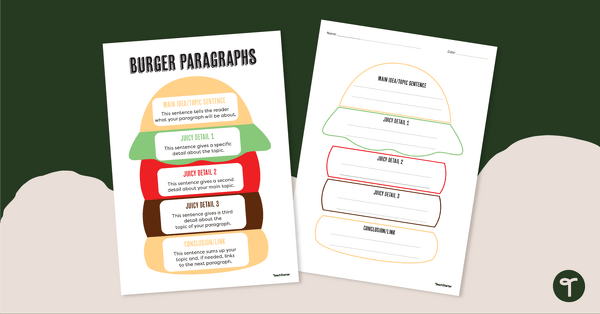
Hamburger Paragraph Poster and Worksheet
Teach your students how to correctly structure a paragraph using this hamburger-themed classroom poster and paragraph planning scaffold.
- Plus Plan
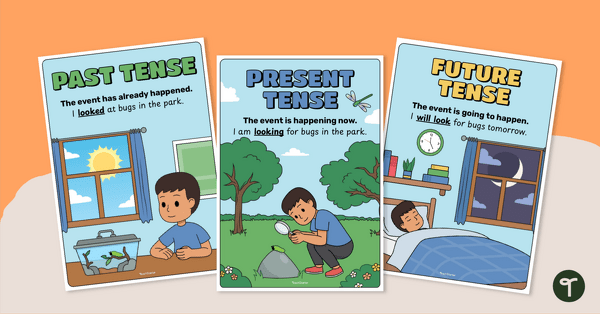
Past Tense, Present Tense and Future Tense Posters
Help your students understand verb tense with this set of past, present and future tense poster examples.
- Plus Plan
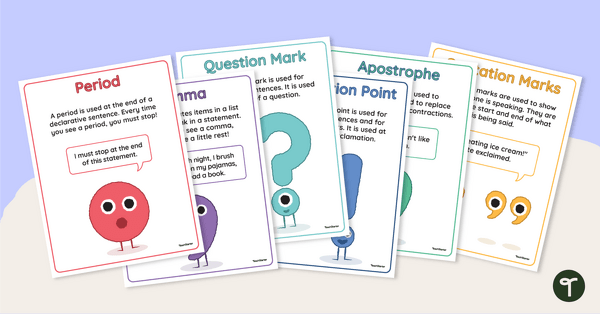
Punctuation Mark Anchor Charts
Display this set of 6 punctuation anchor charts in your classroom to remind your students of the most common punctuation marks and their uses.
- Plus Plan
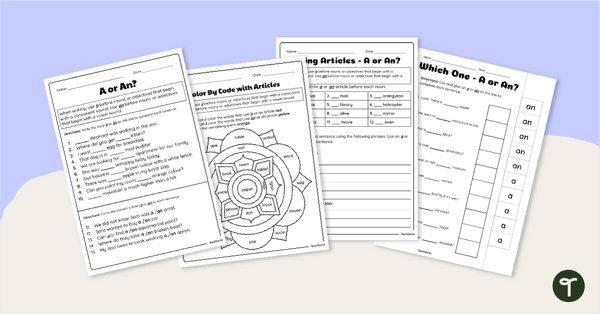
A or An Worksheets
Teach when to use A or An as an article with a printable pack of 'A or An' Worksheets.
- Plus Plan
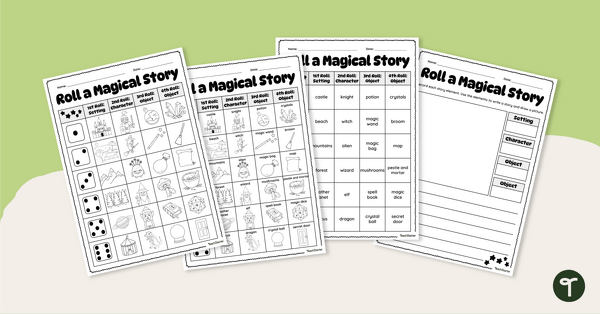
Roll to Create a Magical Story – Dice Game
Get your students writing magical stories with this engaging and interactive “Roll to Create” dice game.
- Plus Plan
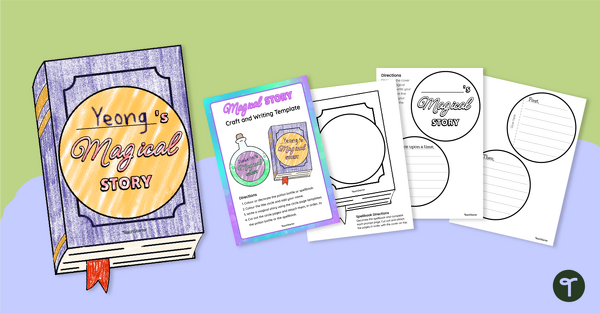
Magical Story Craft and Writing Template
Use this printable craft and writing template to get your students writing stories that are truly magical!
- Plus Plan
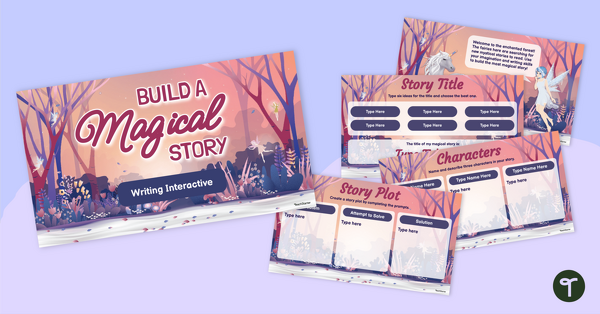
Build a Magical Story Interactive Activity
Use this “Build a Magical Story” narrative writing interactive activity to model the purpose, structural elements and language features of narrative texts.
- Plus Plan
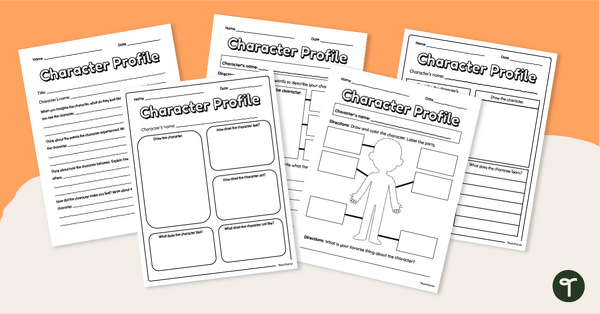
Character Profile Template Pack
Explore the personality, appearance, feelings and actions of a character with printable character profile templates.
- Plus Plan
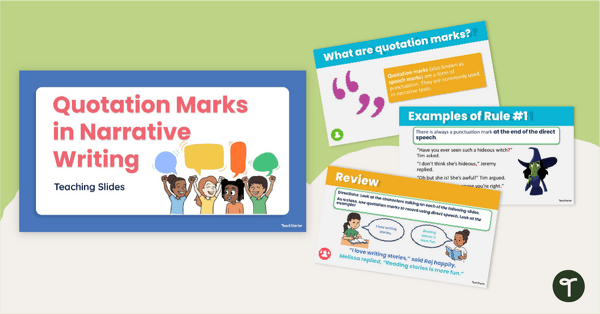
Using Quotation Marks in Narrative Writing PowerPoint
Teach the correct usage of quotation marks in narrative writing with this set of teaching slides.
- Plus Plan
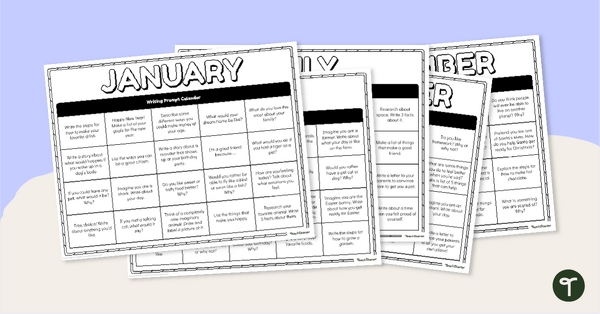
Monthly Writing Prompt Calendars - Lower Grades
Encourage your little learners to write with fun writing prompts for kids in early elementary school.
- Plus Plan
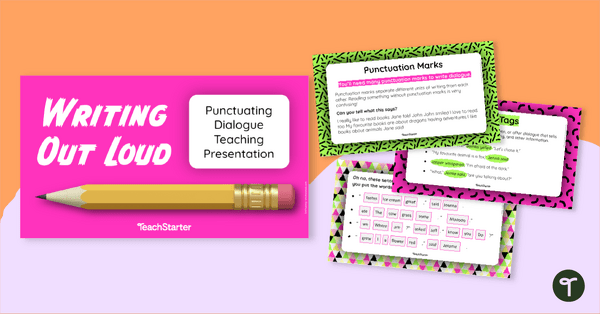
Writing Out Loud: Dialogue Punctuation Teaching Presentation
Teach your students how to write dialogue correctly with an interactive teaching presentation.
- Plus Plan
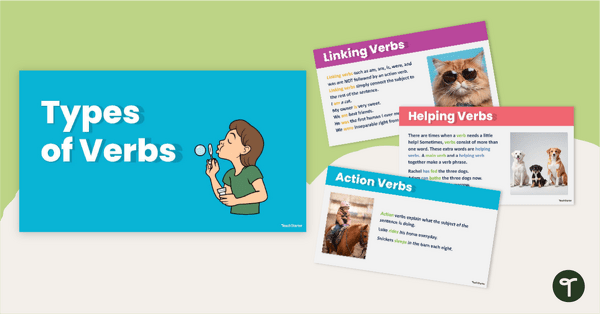
Types of Verbs Teaching Slides
Teach students about the different types of verbs with this set of 38 teaching slides with activities.
- Plus Plan
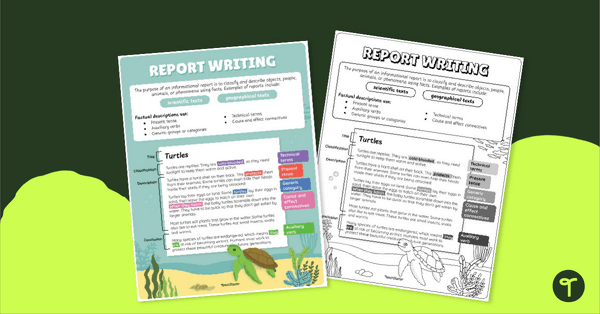
Report Writing Poster With Annotations
Display this report writing poster to help students when learning how to write this type of text.
- Free Plan
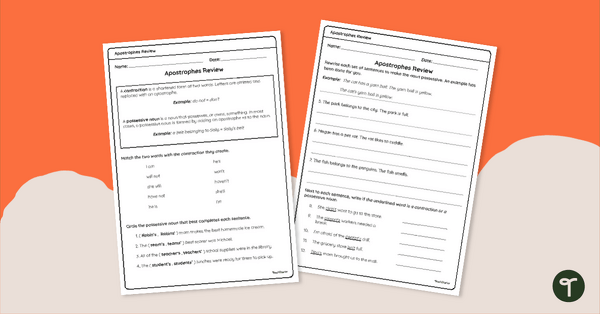
Apostrophe Review Worksheet
Practice using apostrophes with contractions and possessive nouns in this double-sided worksheet.
- Plus Plan

Apostrophe of Contraction Worksheets
Learn about the apostrophe of contractions with this set of worksheets.
- Plus Plan
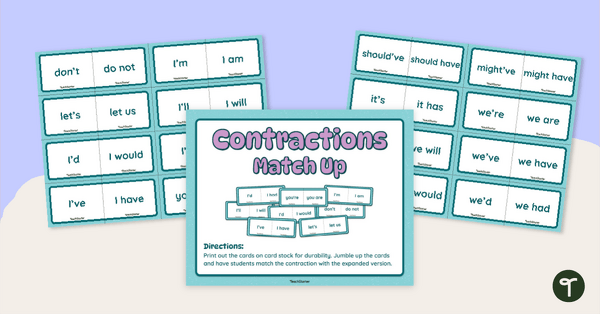
Contraction Match-Up Cards
Practice matching contractions with their expanded form with this extensive collection of match up cards.
- Plus Plan
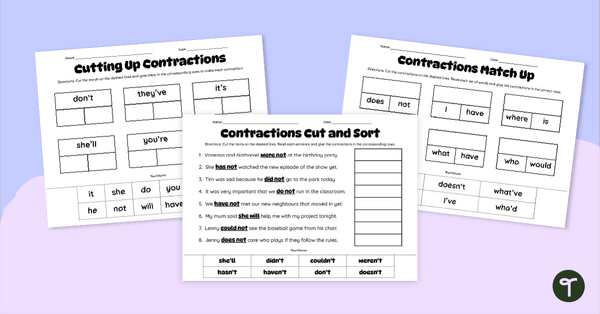
Contractions Cut and Paste Worksheet Pack
Cut up contractions and practice putting contractions together with this set of cut and paste worksheets.
- Plus Plan
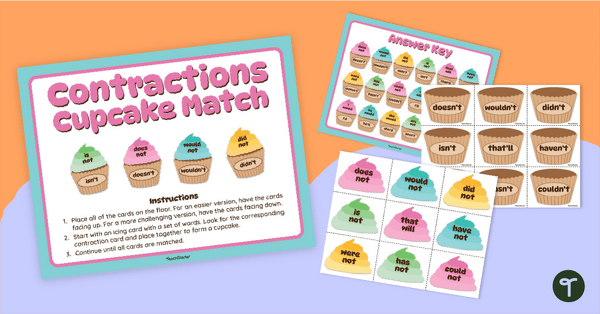
Contractions Cupcake Match
Practice matching contractions with their words using this fun cupcake match-up.
- Plus Plan
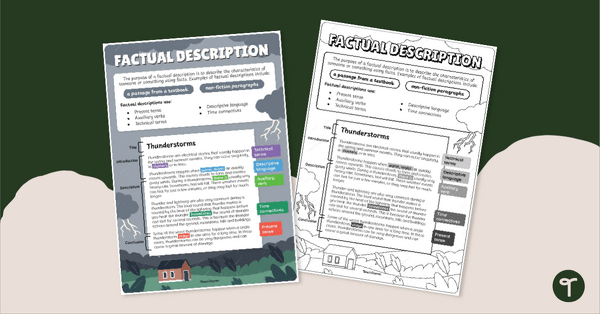
Factual Description Text Type Poster With Annotations
Display this factual description with annotations to help students identify the structure of this type of text.
- Plus Plan
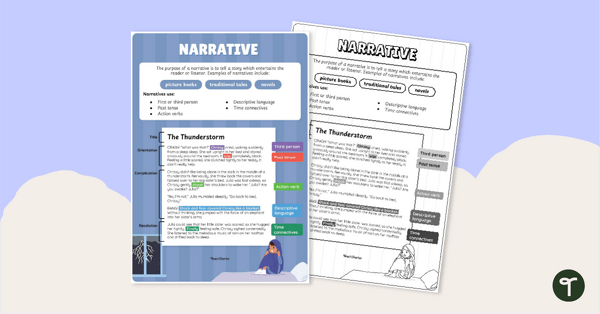
Narrative Text Type Poster With Annotations
Display this narrative text with annotations to help students identify the structure of a narrative.
- Plus Plan
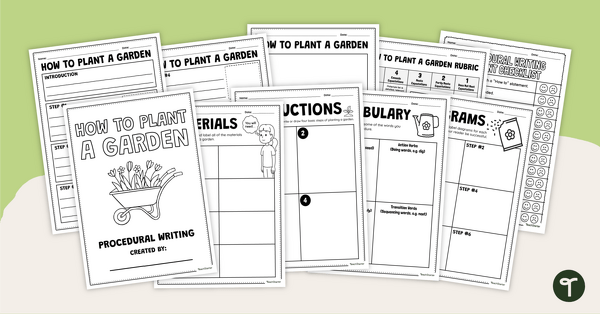
How to Plant a Garden – Procedural Writing Project
Get your students writing high-quality procedure texts with this fun “How to Plant a Garden” procedural writing project.
- Plus Plan
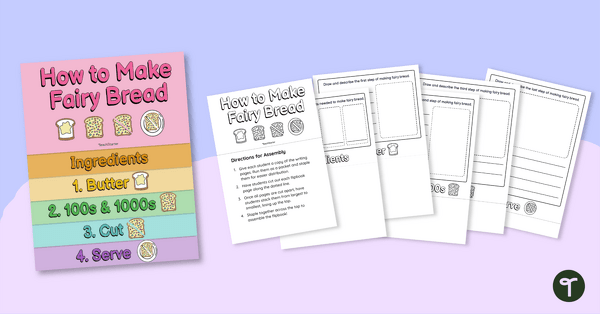
How to Make Fairy Bread Flipbook
Use this “How to Make Fairy Bread” procedural writing activity to help familiarize your students with the structural elements of procedure texts.
- Plus Plan
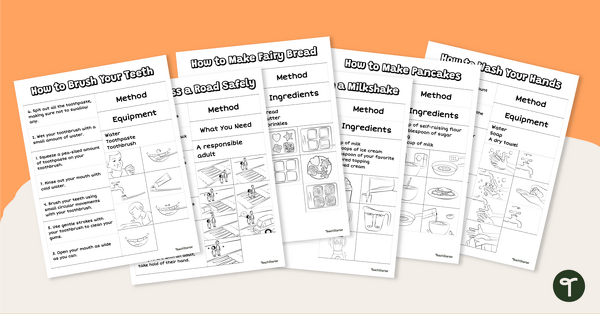
Build a Procedure Text – Cut and Paste Worksheets
Use these different examples of procedure writing to teach your students about the structural features of procedure texts.
- Plus Plan

Sequence a Procedural Text – Cut and Paste Worksheets
Use these procedural writing examples to teach your students about sequencing instructions in a logical order.
- Plus Plan

Busy Binder - Kindergarten Morning Work Activity Book
Review daily calendar, math, literacy, and fine motor skills with a printable kindergarten Busy Binder workbook!
- Plus Plan

Dogs Make The Best Pets - Reading Comprehension PDF
Assess 3rd grade reading comprehension skills with a printable Reading Comprehension Test using an opinion text.
- Plus Plan
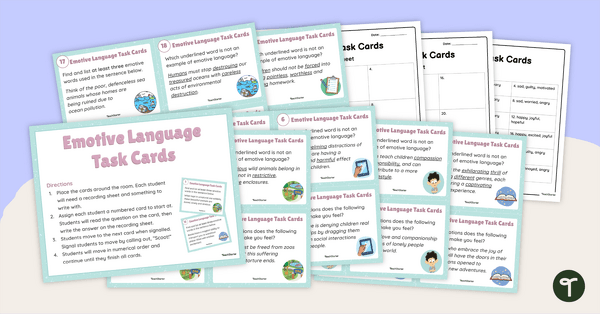
Emotive Language Task Cards
Get students exploring emotive language examples with this set of task cards perfect for your persuasive writing unit.
- Plus Plan
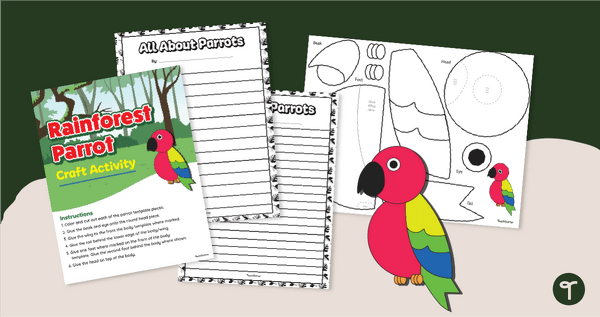
Rainforest Bird Craft & Writing Template
Pair a fun bird craft and informational writing to create a fun jungle-themed bulletin board.
- Plus Plan
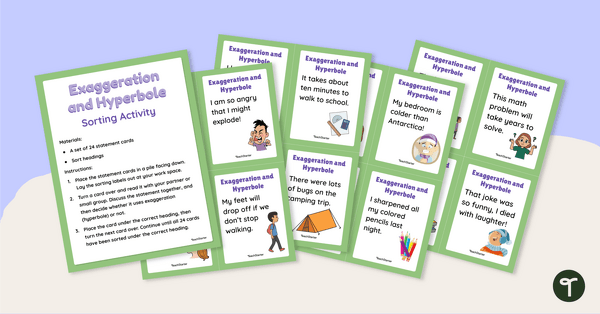
Exaggeration and Hyperbole Sorting Activity
Explore examples of hyperbole with your students using this set of 24 sorting cards perfect for your reading centers.
- Plus Plan
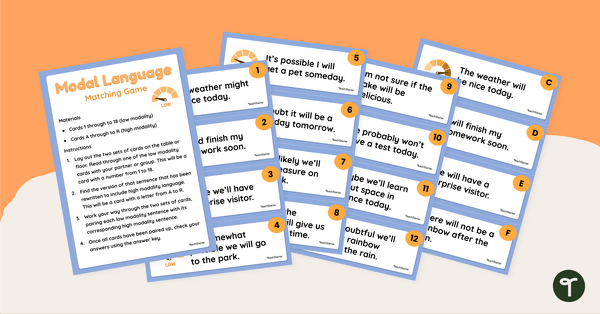
Modal Language Matching Activity
Have students explore high modality and low modality language with this matching game to use during your persuasive writing unit.
- Plus Plan
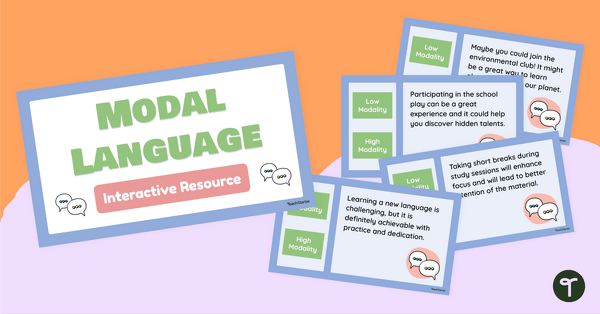
Modal Language Interactive Activity
Explore the language of modality with your students using this digital game perfect for your persuasive writing lessons.